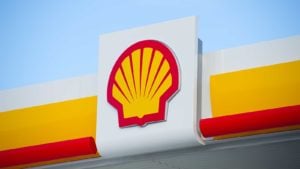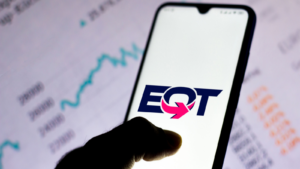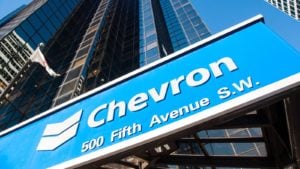If the crisis worsens, the Bank’s forecast of crude prices averaging $84 a barrel this year may prove too optimistic. The conflict could also drive up prices of natural gas, fertilisers, and food, as a fifth of liquefied natural gas exports pass through the Strait of Hormuz.
So with this thesis in mind, here are the top oil & gas stocks for investors to consider scooping up for April this year.
Diamondback Energy (FANG)

Diamondback Energy (NASDAQ:FANG) is strongly favored by analysts, bolstered by a major acquisition that should enhance its operations in the Permian Basin.
For 2024, FANG has set an oil production target between 270 and 275 thousand barrels of oil per day (MBO/d), with planned cash capital expenditures ranging from $2.30 billion to $2.55 billion. The company aims to reduce its return of capital to shareholders to at least 50% of free cash flow, down from previous commitments of 75%.
Looking forward, Diamondback is preparing for a merger with Endeavor Energy Resources, expected to close in the fourth quarter of 2024. Post-merger, Diamondback anticipates significant operational synergies, projecting a substantial increase in production for 2025, targeting between 470 and 480 MBO/d.
In 2023, Diamondback’s financial and operational performance included a fourth-quarter production average of 273.1 MBO/d, and full-year net income reached $960 million. This makes it one of those stocks to buy.
Shell (SHEL)

Shell (NYSE:SHEL) has been upgraded to a “strong buy” by analysts due to favorable earnings reports and increased dividends.
Shell reported adjusted earnings of $6.22 billion for the third quarter last year, with total revenue reaching $78.01 billion despite a 21% decrease from the previous year due to lower commodity prices. Shell emphasized its strategy shift towards upstream investments and the generation of robust free cash flow, which stood at $7.50 billion for the quarter.
For 2024, SHEL has projected a cash capital expenditure of $22 to $25 billion annually, focusing on cost reductions and shareholder distributions. Specifically, Shell aims to cut structural costs by $2 to $3 billion by the end of 2025. The company also plans to distribute 30-40% of its cash flow from operations to shareholders through dividends and buybacks.
Additionally, Shell is intensifying its focus on the energy transition, committing to invest $10-15 billion in low-carbon energy solutions from 2023 to 2025 as part of its Powering Progress strategy.
ConocoPhillips (COP)

ConocoPhillips (NYSE:COP) is recognized for its global oil production capabilities and has seen a 10.65% increase in its stock price year to date.
COP has set its total capital expenditure guidance between $11 billion and $11.5 billion this year. The company aims to maintain its production levels, projecting an output of 1.91 to 1.95 million barrels of oil equivalent per day.
The company continues its strong focus on shareholder returns, planning a capital return of $9 billion in 2024. This is consistent with their past performance, having distributed $11.0 billion to shareholders through dividends and share repurchases in the previous year.
COP pays a strong dividend, with a yield of around 3.21% at the time of writing. It then could be one of those top picks for investors looking to diversify their portfolios in the oil & gas industries.
Cheniere Energy (LNG)

Cheniere Energy (NYSEAMERICAN:LNG) stands out as one of the largest liquefied natural gas (LNG) exporters in the U.S. The company benefits from extensive pipeline and storage infrastructure.
For 2024, LNG has set its financial targets with a guidance range of $5.5 to $6 billion for consolidated adjusted EBITDA and $2.9 to $3.4 billion for distributable cash flow. this follows a robust financial performance in 2023, where the company achieved $8.8 billion in consolidated adjusted EBITDA and exceeded its distributable cash flow guidance with $6.5 billion.
Cheniere plans to maintain high operational levels, expecting to produce approximately 45 million tons of LNG in 2024, which includes accommodating planned maintenance. This production forecast is supported by high proportions of volumes sold.
LNG could then be one of those top oil & gas stocks for investors to watch closely as the situation in the middle east unfolds.
APA Corporation (APA)

APA Corporation (NASDAQ:APA) operates a broad network of natural gas reserves, as well as being a notable player in the oil industry. It has shown consistent growth in production.
The company plans to continue expanding its activities in the Permian Basin and Egypt, aiming to optimize oil production.
APA expects modest oil production growth in 2024, with projections indicating low-single-digit increases. This growth is primarily driven by expansions in the Permian and Egyptian operations, which offset potential declines in other areas such as the North Sea. The company’s strategic focus remains on high-margin production areas.
Financially, APA reported a strong performance for the fourth quarter of 2023, with significant free cash flow generation. This has allowed it to scale its shareholder yield to an impressive 10.30%, which includes all dividends and buybacks.
APA then represents a good mix of capital and income growth potential that investors should pay attention to.
EQT Corporation (EQT)

EQT Corporation (NYSE:EQT) operates extensively in the Appalachian Basin and is known for its large-scale natural gas production capabilities.
For 2024, EQT anticipates total sales volumes to range between 2,200 to 2,300 billion cubic feet equivalent (Bcfe) and plans to allocate between $1,950 million and $2,050 million for maintenance capital expenditures.
And last year, the company achieved a net income of $1.735 billion, marginally lower than the $1.771 billion reported in 2022. These results underscored a challenging year with lowered price realizations and increased capital expenditures, which rose to $1,917 million from $1,427 million.
The company also significantly reduced its debt by retiring over $1.1 billion and enhanced its financial stability. This then puts EQT in a great position moving forward, which is one of the reasons I believe it’s one of those top oil & gas stocks for investors to consider adding to their portfolios in April.
Chevron (CVX)

Chevron (NYSE:CVX) is another Buffett-backed stock, known for its strong free cash flow and consistent dividend growth.
CVX has outlined a substantial capital expenditure budget of $16 billion, reflecting an increase from the $14 billion projected for 2023. This budget will primarily focus on upstream activities in the U.S. Additionally, Chevron anticipates a production increase of 4%-7% compared to its 2023 baseline.
In terms of environmental objectives, Chevron is committed to reducing carbon intensity and expanding its lower carbon businesses.
But what stands out to me about CVX is that its dividend growth rate is 6.76% while also paying an impressive yield of 3.95%. With buybacks included, this totals a shareholder yield of 6.32%.
CVX then offers a good mix of being backed by legendary investors, income appreciation, and the fact that its share has risen 10.57% year-to-date. It’s a great bluechip option for investors who are uncomfortable with speculation.
On the date of publication, Matthew Farley did not have (either directly or indirectly) any positions in the securities mentioned in this article. The opinions expressed are those of the writer, subject to the InvestorPlace.com Publishing Guidelines.
Matthew started writing coverage of the financial markets during the crypto boom of 2017 and was also a team member of several fintech startups. He then started writing about Australian and U.S. equities for various publications. His work has appeared in MarketBeat, FXStreet, Cryptoslate, Seeking Alpha, and the New Scientist magazine, among others.
